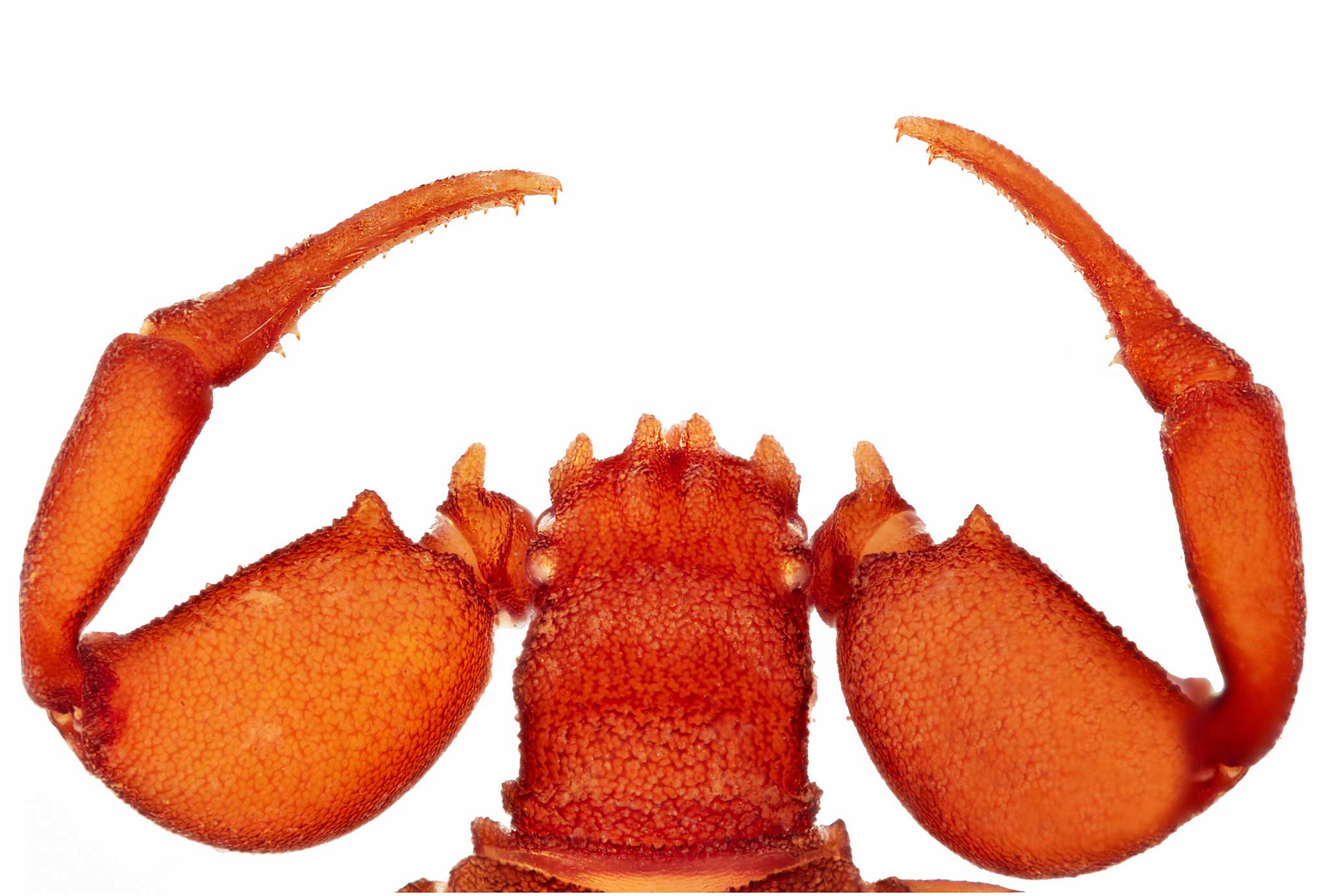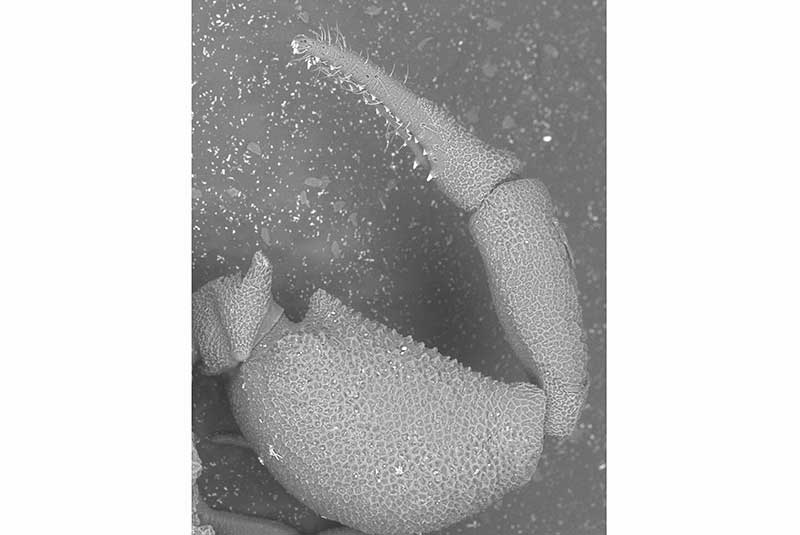„Big muscles and wrinkled skin”: the Hercules pseudoscorpions
 The massive arms that made Arnold Schwarzenegger one of the namesakes and the four bumps at the front of the head, the carapace, reminiscent of a crown, quite worthy of a demigod, as Hercules was. © LIB, Lorenz
The massive arms that made Arnold Schwarzenegger one of the namesakes and the four bumps at the front of the head, the carapace, reminiscent of a crown, quite worthy of a demigod, as Hercules was. © LIB, Lorenz
In their latest publication, researchers at LIB have discovered and described three new genera with a total of twelve new species of pseudoscorpions. They all come from Madagascar – a hotspot for biodiversity and endemic species. The team of researchers led by Michelle Lorenz came up with creative ideas for naming the little animals, which are about two millimetres in size.
Frida Kahlo, Arnold Schwarzenegger and Hercules – they are all among the namesakes of the new pseudoscorpions recently described in the Arachnology Department at the Museum der Natur Hamburg. The prominent names suit the little animals because they are reflected in their physique: They have comparatively massive “arms”, the so-called pedipalps, which visually set them apart from most of their relatives. The species named after the Mexican artist is characterised by a particularly dense “fur” over the eye area.
It all began with Michelle Lorenz’s Bachelor’s thesis, which she wrote in the Arachnology Department of the LIB in collaboration with Dr Danilo Harms. Here she delineated the first four species and learned a lot about taxonomic and molecular work at natural history museums. Pseudoscorpions are the small relatives of scorpions and are so tiny that it is difficult to see differences between the individual species without tools and with the naked eye. With the help of molecular investigations and scanning electron microscopy, Lorenz nevertheless noticed differences that she was able to use in the descriptions of the new species. “With each new examination method I used, I recognised new details – for example, new organs – which helped me to differentiate them,” says Lorenz. Under the scanning electron microscope, the extremely strong arms of the pseudoscorpions with sharp claws at the end would show up well – although in reality they are only about 0.2 millimetres in size.
For the publication in “Arthropod Systematics & Phylogeny”, the researchers described a further eight species, which they were able to divide into three new genera. These are based on their respective occurrence in the north, south and west of Madagascar. The animals were collected during an expedition by the California Academy of Science (CAS) between 2002 and 2004 and sent to experts from the museum in Hamburg. “When we realise that these animals live very hidden in the ground litter and can crawl no more than a few centimetres a day, the find is really a stroke of luck,” Lorenz sums up. “Our research is important because hardly any other region on earth is suffering such a severe loss of biodiversity as Madagascar. Some of the new species have extremely small distribution ranges and are probably highly endangered or even already extinct, considering that, about 95 percent of the natural habitats on Madagascar have already been lost. That’s why their discovery and description is practically important.”
The researchers chose Arnold Schwarzenegger as the namesake not only because of his impressive upper arms: they also want to honour his commitment to environmental protection during his two terms as governor of California. The high biodiversity of Madagascar is severely threatened by us humans and our way of life, so we want to use the prominent names to refer to a serious issue in a very casual way,” says Danilo Harms, section head of arachnology at LIB.
Paper:
Michelle Lorenz, Stephanie F. Loria, Mark S. Harvey, Danilo Harms, “The Hercules pseudoscorpions from Madagascar: A systematic study of Feaellidae (Pseudoscorpiones: Feaelloidea) highlights regional endemism and diversity in one of the “hottest” biodiversity hotspots”, Arthropod Systematics & Phylogeny 80 (2022), https://doi.org/10.3897/asp.80.e90570
Contact:
Dr. Danilo Harms
Head of the Section Arachnida & Myriapoda
Museum of Nature Hamburg
Leibniz Institute for the Analysis of Biodiversity Change
D.HARMS@LEIBNIZ-LIB.DE




